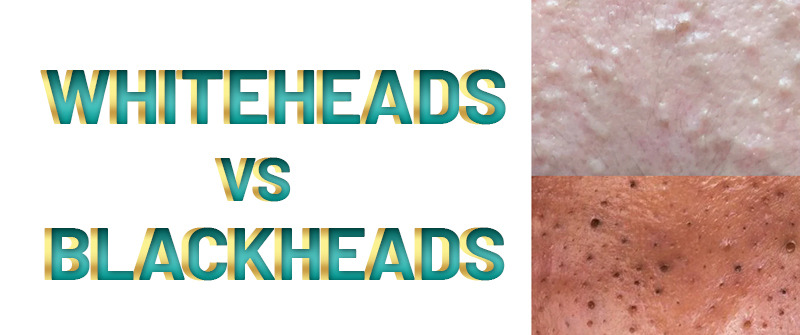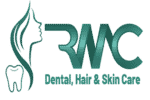
It’s a known fact that Acne is one of the most common Skin problems faced by people of every age of group. If one has ever experienced acne, the two most common types he or she has experienced are blackheads and whiteheads.
Whiteheads and blackheads are made up of the same material, which is usually a combination of dead skin cells, oil, and sebum. However, whiteheads are closed pores while blackheads are open
Causes of Blackheads
Blackheads form when a plug develops in the opening of a hair follicle on your skin. Each follicle contains a hair and an oil-producing sebaceous gland. This oil, known as sebum, helps keep the skin soft. If the skin over the bump is clogged, the bump is called a whitehead. When the skin above the bump opens, exposure to air causes it to look black and form a blackhead.
Certain factors can increase the risk of developing acne and blackheads, including:
- The body produces more oil
- Propionibacterium acnes bacteria build up on the skin
- Irritation of hair follicles when dead skin cells are not shed regularly
- Hormonal changes that cause an increase in oil production during adolescence, menstruation, or when taking birth control pills
- Taking certain medications such as corticosteroids, lithium or androgens
Some believe that what you eat and drink can affect your acne. Dairy products and foods that raise blood sugar levels, such as carbohydrates may play a role in causing acne.
Blackheads Developing Process
Blackheads are also called open comedones. Comedones are skin-colored bumps that occur during acne breakouts. In the case of blackheads, these comedones consist of follicles with very large openings or pores under your skin.
A reaction occurs with the sebum on one’s skin. Melanin oxidizes and causes clogged pores to darken. These pimples often appear on your back, shoulders, and face.
Causes of Whiteheads
Understanding the cause of whiteheads can help one to prevent future outbreaks. Clogged pores are the main cause of whiteheads. Your pores can become blocked for a number of reasons.
Hormonal changes that cause acne are one of the causes of clogged pores. Increased oil production leads to clogged pores and whiteheads.
These steps include:
- Puberty
- Menstruation
- Pregnancy
Some contraceptives that contain only progesterone can increase hormone levels and cause acne breakouts in women. Similarly, some women experience more acne during certain phases of their menstrual cycle if they stop taking birth control pills. Reliable sources revealed have found that genetics also play a role in the development of various types of acne, including whiteheads. If someone in your family has acne, you are more likely to have it too.
Whiteheads developing Process
Whiteheads are known as closed comedones. The follicles under your skin fill with bacteria and cause a very small opening on the top of your skin. Air cannot enter the follicle so the bacteria inside cannot undergo the same reaction that darkens blackheads. Like blackheads, whiteheads are usually found on your back, shoulders, and face.
Differences between blackheads and whiteheads
Both blackheads and whiteheads are forms of acne caused by plugs of matter, but only blackheads are oxidized. This means that blackheads are dark in appearance and remain on the surface of the skin, while whiteheads are white and rise above your skin to form a whitehead.
Neither type of acne is usually painful or dangerous to your health, but both can make you self-conscious about your appearance, especially if you’re prone to chronic breakouts.
Common Treating Methods
Both blackheads and whiteheads are caused by clogged pores which means they can be treated similarly. Over-the-counter (OTC) products are effective in treating blackheads and whiteheads.
A review of existing research by a reliable source suggests that the following natural remedies may help reduce acne breakouts in some people:
- Apply tea tree oil to the skin
- Ingestion of bee pollen
- Follow a low glycemic diet
- Avoid touching your face as possible.
You may be tempted to pick blackheads or pop whiteheads. But the bacterium that was in one’s pimples can spread to skin and cause more breakouts on the rest of face. Acne breakouts can cause scarring, discoloration, or skin redness, irritation, and pain.
Generally, treating blackheads, whiteheads, and other types of acne requires the same or similar treatment protocol.
Medication
Acne treatments include topical medications. One can treat acne with medications like benzoyl peroxide and salicylic acid. Usually, these are available as creams or washes that you can use as part of your skin care routine.
Antibiotics
If one have infected pimples a course of antibiotics can help treat them. They are effective in preventing or treating blackhead-causing bacteria.
Extraction
Extractions are a technique which practices to remove acne. This gentle skin care service not only gets rid of your acne, but it also leaves your skin looking healthy, glowing and clean.
Prevention
Try to develop a skincare routine that will help address and prevent future blackheads and whiteheads. This includes developing a cleansing routine tailored to your skin type and switching to oil-free makeup and skincare products.
Acne can be frustrating and lower your self-esteem but the good news is that it’s highly treatable. Contact our team for help with blackheads, whiteheads or other types of chronic acne.
How to Remove Whiteheads
Start with a pore-clarifying cleanser. If one have oily skin or sweat a lot during the day, keep cleansing wipes with you for effective cleansing during the day. At night, be sure to remove all your makeup to avoid excess bacteria on your face.
Finally, adding a gentle exfoliating scrub to your weekly routine will help remove dead skin cells that may be clogging your pores. But be careful not to overdo it with exfoliating.
How to Remove Blackheads
Blackhead removal is slightly different from whitehead removal. Cleansers and exfoliators can help with blackheads and whiteheads, but here are some additional tips for dealing with blackheads:
You can add pore strips to your routine for instant blackhead removal.
If one blackhead is caused by overly oily skin, adding a face mask with charcoal or clay to skincare routine can help absorb the excess oil that causes blackheads. Use only makeup labeled non-comedogenic to help prevent blackheads before they form on anyone’s skin.
